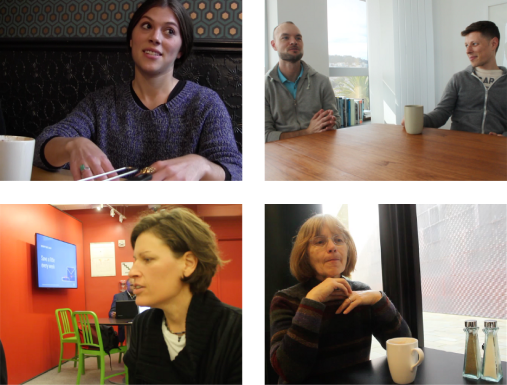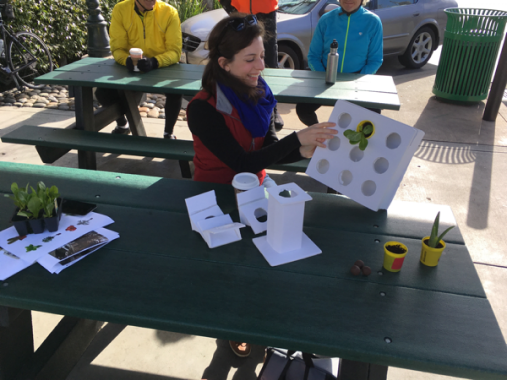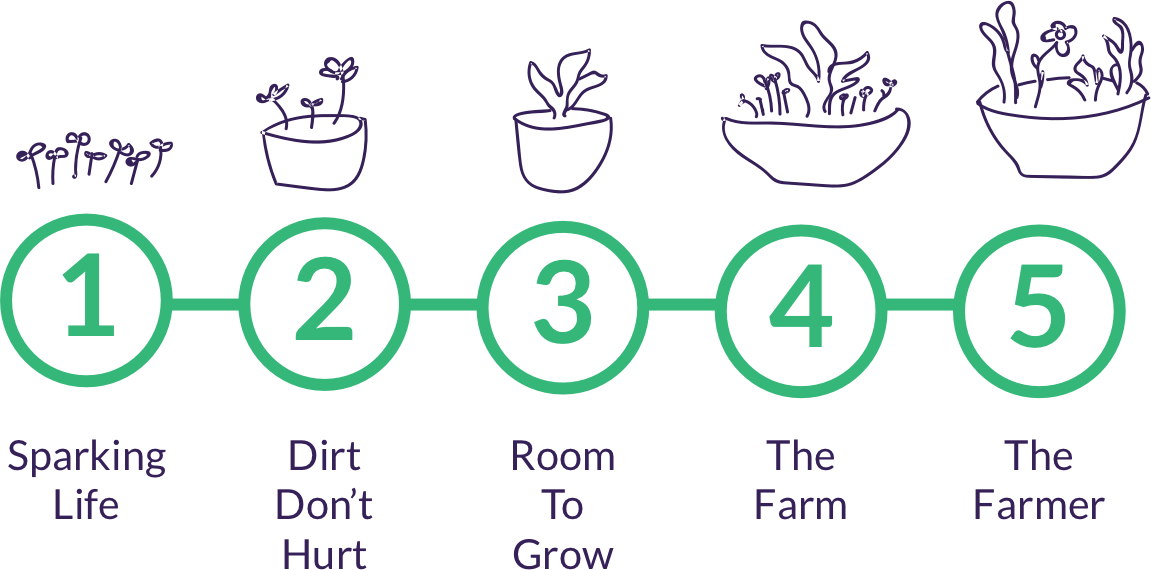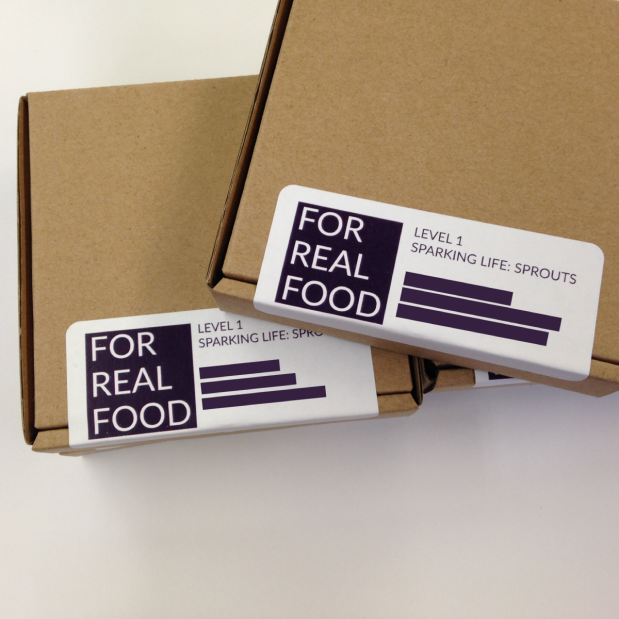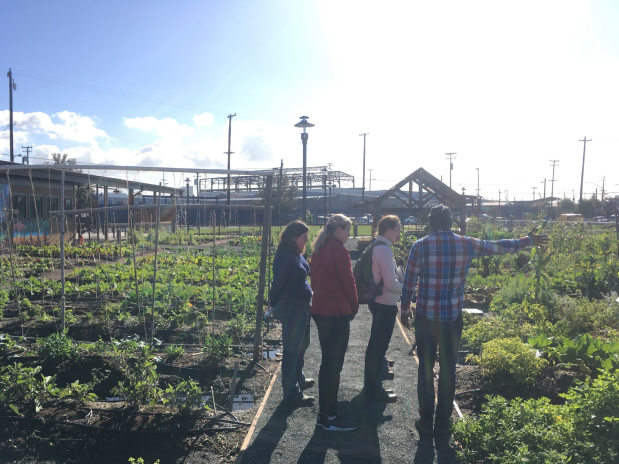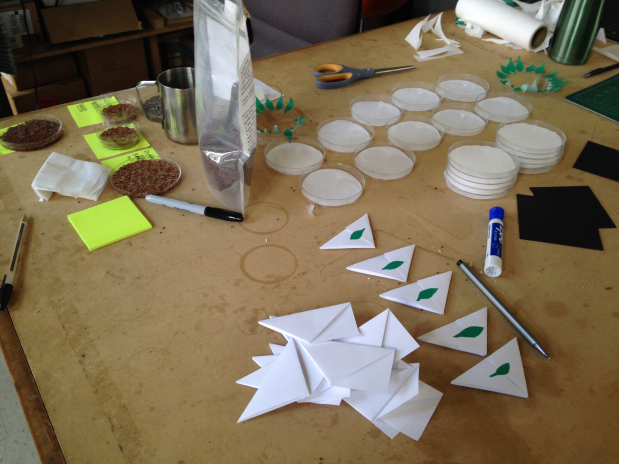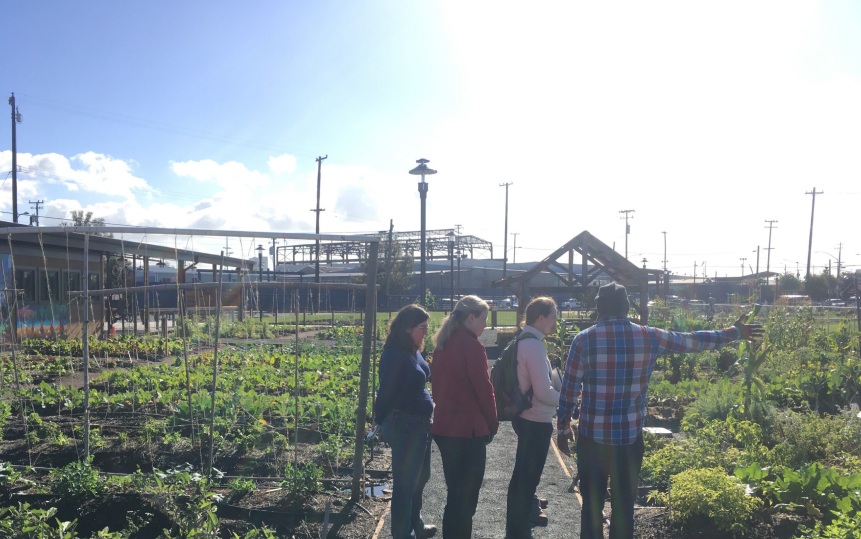
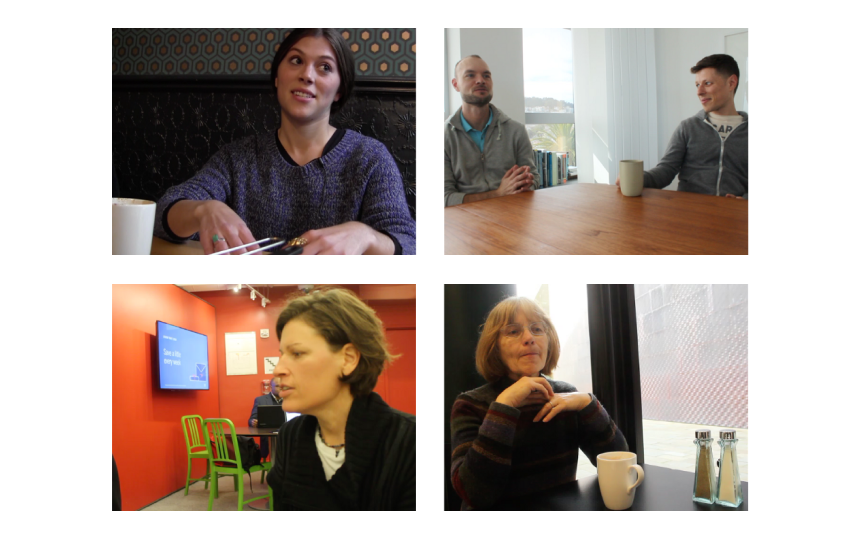
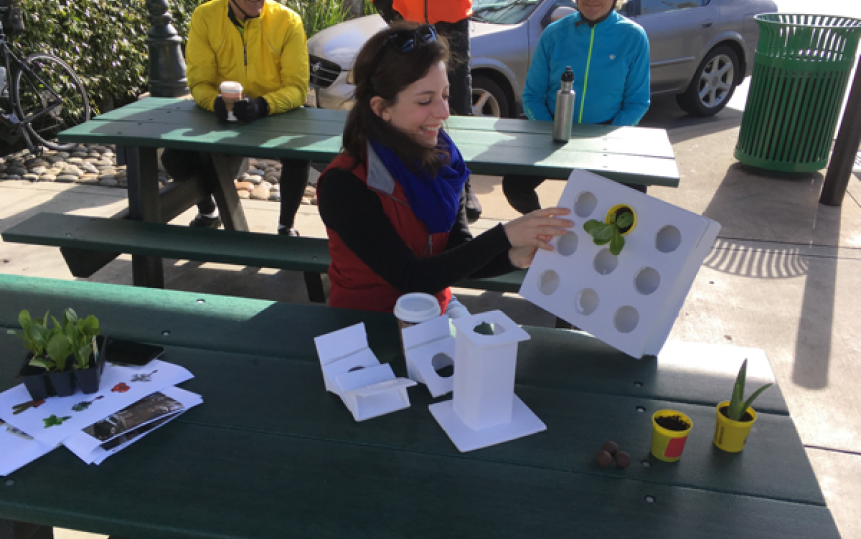
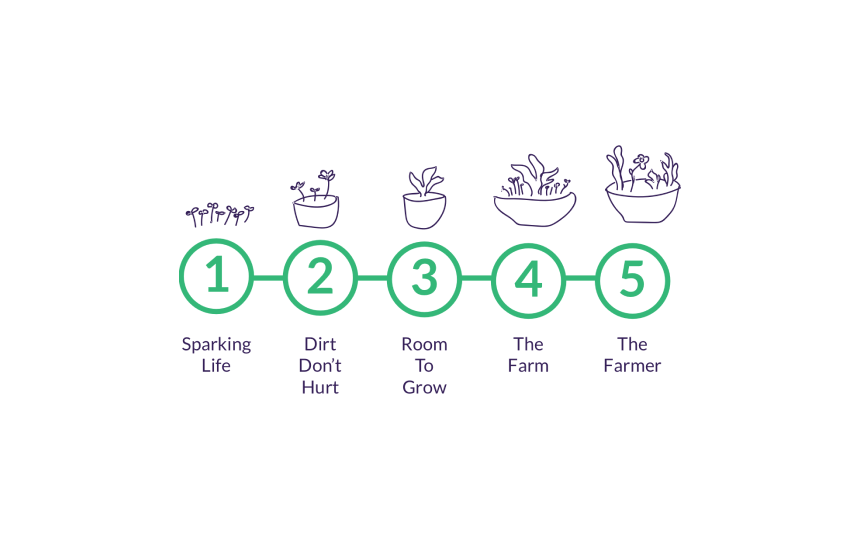
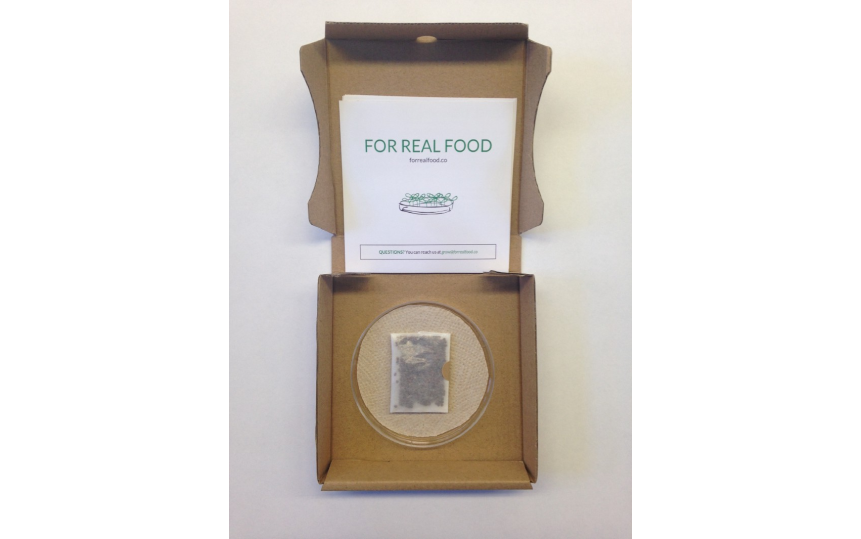
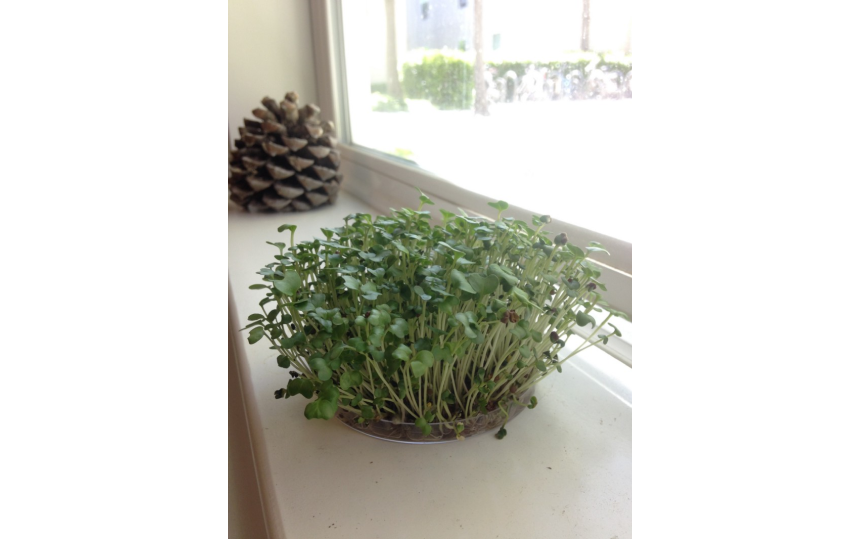
For Real Food
For Real Food was a year-long design thinking challenge. Our goal was to better understand the food system around us and use the design process to create a product that positively impacts our food culture. Now this is a very open-ended and broad goal. So to get started, we just dove in and talked to as many people as possible. We looked at composting, urban farms, community gardens, grocery stores, and really anyone else that would talk to us about food. We went through rounds of brainstorming, prototyping, and testing to see how people reacted emotionally to certain aspects of our food system. In the end, we designed and sold a product that systematically taught urban millennials how to grow real food.
The design team! Emily, Pat, Bethany, and Eric.
Design leadership
Our team consisted of four Stanford graduate students. Emily and I were part of Stanford’s graduate program in design, and as such, our responsibility was to lead the team through the design thinking process. Bethany joined the team as a mechanical engineering masters student with an expert knowledge in sustainable agriculture. And Eric was completing his joint degree; a MBA and a Master’s in Environmental Science. This project would not be successful without these amazing people.
So here is where things get messy. We had no idea what sort of product or service we wanted to build in the world. All we knew is that we wanted to make a positive impact on our food system. So we went out and did some need finding.
We iterated and cycled through every stage of the design thinking process. We interviewed, analyzed, brainstormed, prototyped, and tested. We worked on farms, with compost bins, in community gardens, and outside of grocery stores. We logged over 60 hours of ethnographic interviews and created dozens of prototypes.
Needfinding interviews were key to discovering insights.
User Research
So where do you start when you don’t know where to start? The answer was to talk to people.
Needfinding was a major part of our work. By getting out of the building and talking to potential users, we were able to gain insights that lead us to our ultimate solution.
One key to needfinding is to find the right users for insights. In this case, we wanted to find extreme users that could highlight things that typically fly under the radar. For example, we interviewed a woman who has a human compost toilet within the city limits of Palo Alto. Her extreme dedication to sustainability allowed us to see into a world we would not typically have access to. We also explored various urban farms and listened to the farmers talk about their passion for the underserved neighborhoods and food deserts.
These conversations lead us to various ideas on ways to impact the food system. We then took these ideas and started to prototype and test our insights.
Prototyping
Prototyping is the other major tool we used that goes hand in hand with our user research. By building prototypes, we think with our hands and advance our ideas. These prototypes were used to explore different concepts or figure out how we might solve a technical solution.
Prototyping also gives us something tangible to show our users. By presenting tangible concepts to our interviewees, we were able to help them imagine the future we are trying to create. In this way they were able to tell us what was working, what we were missing, or how we could solve this better.
It was the combination of user research and prototyping that lead us to the insights that landed us on our final solution.
A prototype growing sprouts using different packaging.
Prototyping plant pods at a local Whole Foods.
A community app matching neighbors to help learn how to use a community garden.
Prototyping a compost delivery system.
Insights
Along the way, we began to recognize a few patterns from the people that we talked with. First, there was an obvious lack of space to grow food in an urban environment. This became apparent when we looked into the community gardens in the area.
Every community garden in the area had over a 5 year wait list.
Why was the demand for community gardens so high? We continued using our design thinking process to find out.
We focused our efforts on people currently on a community garden waitlist. After running a few prototypes and interviews, we broke our users down into two categories: expert gardeners and novice gardeners. The expert gardeners genuinely just needed space to grow their plants. A problem that is too big for a resource stricken city like San Francisco.
But the novice gardeners were looking for more:
They wanted a place to reconnect with nature.
They wanted convenience. A place close to home that they could easily tend their plants.
And they wanted a community to support them while they learned how to grow food.
Solution
So we decided this was the place we could make an impact on our food system. We could reconnect people to the food system by allowing them to experience nature through the growing of real food.
For Real Food was a series of 5 progressive growing challenges, delivered right to our users’ doors. We provided all the materials and knowledge they needed to get started. All they had to do was add water and set it up on a sunny window. By the end of the series, our users would have a fully functioning window garden and the confidence to grow real food.
Our first kit teaching users how to start by growing sprouts.
Opening the kit, our users are presented with easy step by step instructions, seeds, and a dish for growing their sprouts; no soil required!
A young user watering her sprouts for the first time.
The sprouts will be ready to harvest in 10-15 days.
Results
After landing on this solution, we began shipping and iterating on our product based on customer feedback. We continuously improved our packaging, branding, instructions, materials, and community. By following the design process, we were able to create, package, and ship our kits to happy customers. When it was all said and done, we had delivered 102 kits to our users. We received $2,000 in grants, made $115 in revenue, and we were a crowd favorite at Maker Faire 2017.
Selling our kits at Maker Faire.
Touring an Urban Farm
Some initial posters and branding.
Kit #2 growing microgreens.
Experimenting with different seed types.
Assembling some packaging.

